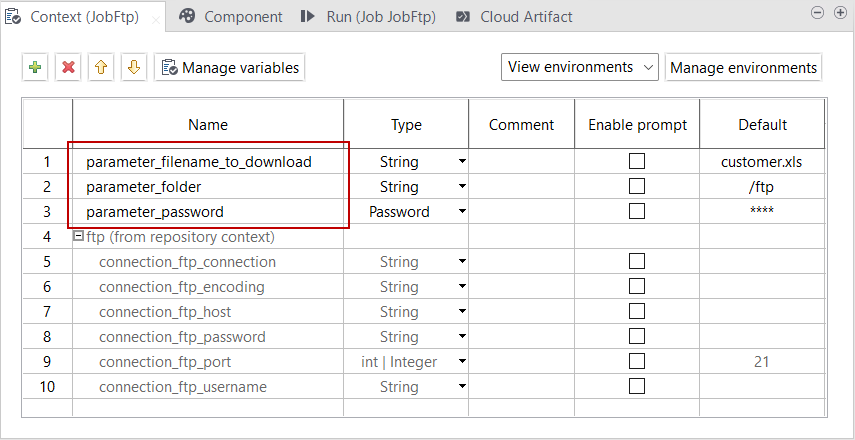Setting user-defined parameters
You can use the Context view in Talend Studio to
define context environments, context parameters and context values.
Before you begin
About this task
- When publishing an artifact for the first time, its value is cleared and has to be set for the corresponding task in Talend Management Console.
- When you re-publish an artifact, its value in the corresponding task stays the same in Talend Management Console.
Procedure
Did this page help you?
If you find any issues with this page or its content – a typo, a missing step, or a technical error – let us know how we can improve!

